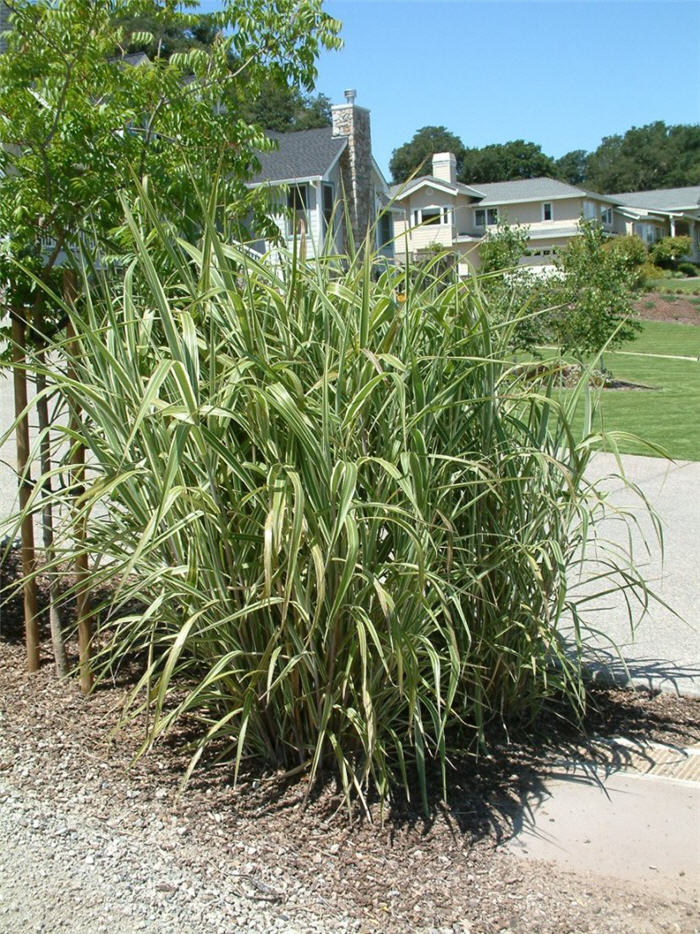| Botanical Name: Arundo donax 'Variegata' | |
| Common Name: Striped Giant Reed |

-
Anatomy
-
Culture
-
Design
Plant Type
Perennial, Grass
Height Range
6-12'
Flower Color
n/a
Flower Season
n/a
Leaf Color
Green, White, Yellow, Variegated
Bark Color
n/a
Fruit Color
n/a
Fruit Season
n/a
Sun
Full, Half
Water
Medium, Extra in Summer
Growth Rate
Fast
Soil Type
Sandy, Clay, Loam, Rocky, Unparticular
Soil Condition
Average, Rich, Poor, Well-drained, Moist
Soil pH
Neutral, Basic
Adverse Factors
Invasive
Design Styles
Japanese, Mediterranean, Tropical, Water Garden, Wetlands
Accenting Features
Silhouette
Seasonal Interest
Summer, Fall
Location Uses
Background, Walls / Fences
Special Uses
Hedge, Screen, Wind Break
Attracts Wildlife
n/a
Information by: Stephanie Duer
Photographer:
Photographer:
-
Description
-
Notes
Similar to the species, Striped giant reed is a bit smaller and less inclined to be invasive. It has creamy yellow and white variegated leaves, with the coloration more pronounced in the spring. Grows 6 to 12 feet tall and 2 to 3 feet wide. Does not flower dependably. Turns beige with the first hard frost.
Grow in full sun to part shade in nearly any soil; withholding water is a great way to control its spread. Thickets can become quite dense; cut back to the ground in February or March to keep plant neat. Plants may not flower before the onset of winter. In some regions of the country, this plant has become invasive, but our freezing winters and dry summers makes this easier to control; though it might be best to avoid planting Giant Reed within riparian corridor areas. Canes are useful as garden stakes, fencing, and thatching roofs of garden structures.